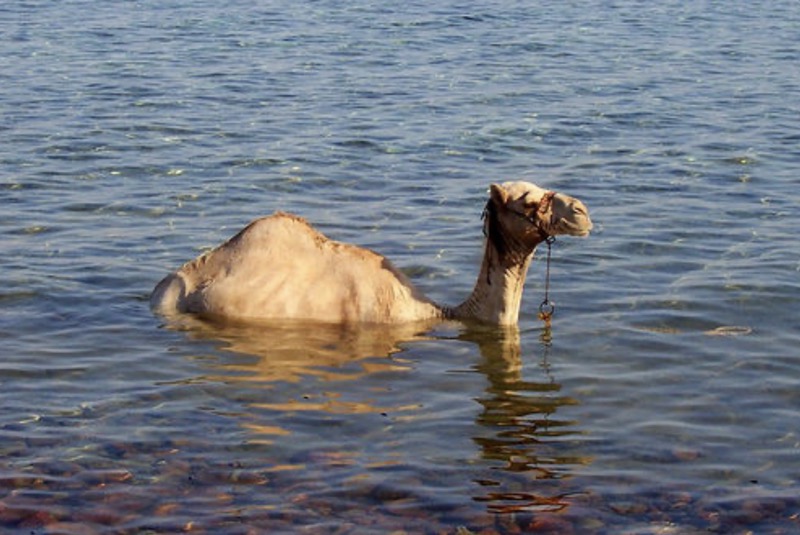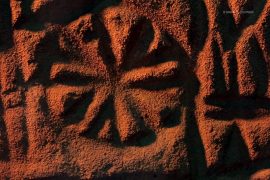A distinct breed of camel coexists with the Jat people in the vast deserts of Kutch, Gujarat. For hundreds of years, these nomadic camel herders have reared their camels. These exceptional ungulates, known as kharai camels, can accomplish what ordinary camels cannot: they can swim.
This one-of-a-kind breed is the only group of camels in the world that can swim. They are not geographically restricted, yet they cannot escape the many pressures of man-made changes and are on the verge of extinction.
Their name, kharai, is derived from the native word khara, which means saline. When the season changes and monsoons arrive, they swim along the Gulf of Kutch, an entrance of the Arabian Sea. They make their way to tiny forest islands to feed on mangroves and other saline-loving vegetation.
These camels make their way through the sea and swim like fishes in the ocean. It is unknown when these camels began swimming, but the Fakirani Jat group claims they had been crossing rivers with their camels for approximately 300 years. They believe these camels came from the sea just as the community migrated to these lands.
Kharai’s softly cushioned hooves let them easily traverse the damp and saline coastal terrain, and they can swim up to three kilometres. They drink rainwater gathered in the depressions of the islands immediately after grazing. When water is not available, the herders transport the animals to neighbouring communities. The camels and herders have a strong relationship, but this is all in danger due to the changing environment.
According to a recent count, fewer than 4,500 camels survive in the state. In 2012, 2,200 camels were in Kutch regions such as Lakhpat, Abdasa, Mundra, and Bhachau. In 2018, the numbers dwindled to 1,800.
Jetties are springing up throughout the beaches of Gujarat, drastically altering the paths used by camels. In certain instances, they cannot access mangrove islands. Rapid industrialisation in mangrove swamps and the unpredictable rainfall erode the environment on which kharai camels depend for sustenance. Conservationists warned that it is threatening the extinction of this unique species.
Due to the changing terrain attributed to construction, the camels feel insecure crossing the waters. Following the Bhuj earthquake in 2001, an intensive effort to reconstruct Kutch was initiated. The mining, saltpan, cement, and windmill sectors expanded significantly in the area. New highways are constructed through fragile ecosystems, frequently cutting across the historic routes of camels.
The salt businesses build salt pans by limiting tidal water access into the mangroves. This causes the plants to dry out and ultimately destroys them.
“These companies create mud walls, locally known as bunds, around a portion of land which blocks the tidal water. Without the water, the mangroves die a slow death, making it easier for the machines to uproot them,” reported Mahendra Bhanani, the coordinator of Sahjeevan, a camel programme. A company plundered over four square kilometres of mangrove cover within a month in 2018.
The mangroves are an integral part of Kharai’s diet. The industrial activities in the area are diminishing the ecosystem, leaving little mangroves for the camels to consume. Herders are compelled to travel considerably greater distances or seek other sources of income.
“Dust from the cement industries settle on the surrounding patches of mangrove and this gets eaten by the camels. We’re seeing them fall ill now and develop skin diseases like nothing we’ve ever known,” explains Saleh Mohammad, who herded the camels through the sea.
The salt firms claim that they offer growth and employment to an otherwise desolate region. However, the Gujarat Institute of Desert Ecology claims that these companies are making far-fetched efforts to claim the lands declared as badlands.
A Thivakaran is a scientist who focuses on coastal and marine ecology at the Gujarat Institute of Desert Ecology. He explains that since the destruction from the industries was rampant, in 2011, the government passed strict laws to save the mangroves. However, the companies began blocking the tidal creek, which killed the mangroves within a year. The land would then be declared as a wasteland and could be utilised by the companies.
With the loss of their animals, headers face loss of income. This often leads them to work in mines, destroying the mangrove ecosystems they initially relied on. As a consequence of these difficulties, fewer herders are now maintaining camels, and camel populations have started to decline.
In 2015, the Indian government declared Kharai camels as endangered. Efforts began to protect the numbers of these camels from further decline.
Members of the Jat group joined forces with the Maldharis, Kutch’s other traditional camel herders, in 2011. They established the ‘Kachchh Camel Breeders Association’ and have been striving to preserve this unique and rare breed of camels.
In September 2019, the organisation also received a respite from India’s National Green Tribunal, which oversees environmental issues. It requested that Gujarat officials remove any impediments to the flow of tidal streams and restore mangroves. It also cautioned against any salt production activities in certain regions.
According to India’s forest department, mangrove cover in Gujarat has increased from 1,140 square kilometres in 2017 to 1,177 square kilometres in 2019. However, the camels are not permitted to graze on the department-owned property.
“It’s the industries [that are responsible]. Camels and mangroves have coexisted for generations. Moreover, kharai camels mostly graze on sparse or degraded mangroves,” says Thivakaran, who opposes holding camels responsible for the depletion of mangroves.
Local non-profits have been actively campaigning against further industrialisation in the region. They are encouraging the herders to begin selling camel milk as a source of income. The community opposed the sale of camel milk or wool as per the old traditions.
However, in recent years, many individuals have begun selling milk to survive. The milk of kharai camels is locally believed to be helpful in the treatment of tuberculosis, diabetes, and even cancer.
The local community remains pessimistic about the future of the camels. They believe industrial growth will lead to the slow and painful degeneration of the only swimming camels in the world.
“The camels’ extinction would not just be an ecological loss but also a cultural one,” says a member of the Fakirani Jat group. These animals are a part of the nomadic families of Kutch and are treated as children of the house. Losing them will cause a significant change in the lifestyles of the community.
My ancestors gave me these camels. They are like my kids. How can I see them die in front of my eyes?
-30-
Copyright©Madras Courier, All Rights Reserved. You may share using our article tools. Please don't cut articles from madrascourier.com and redistribute by email, post to the web, mobile phone or social media.Please send in your feed back and comments to editor@madrascourier.com











